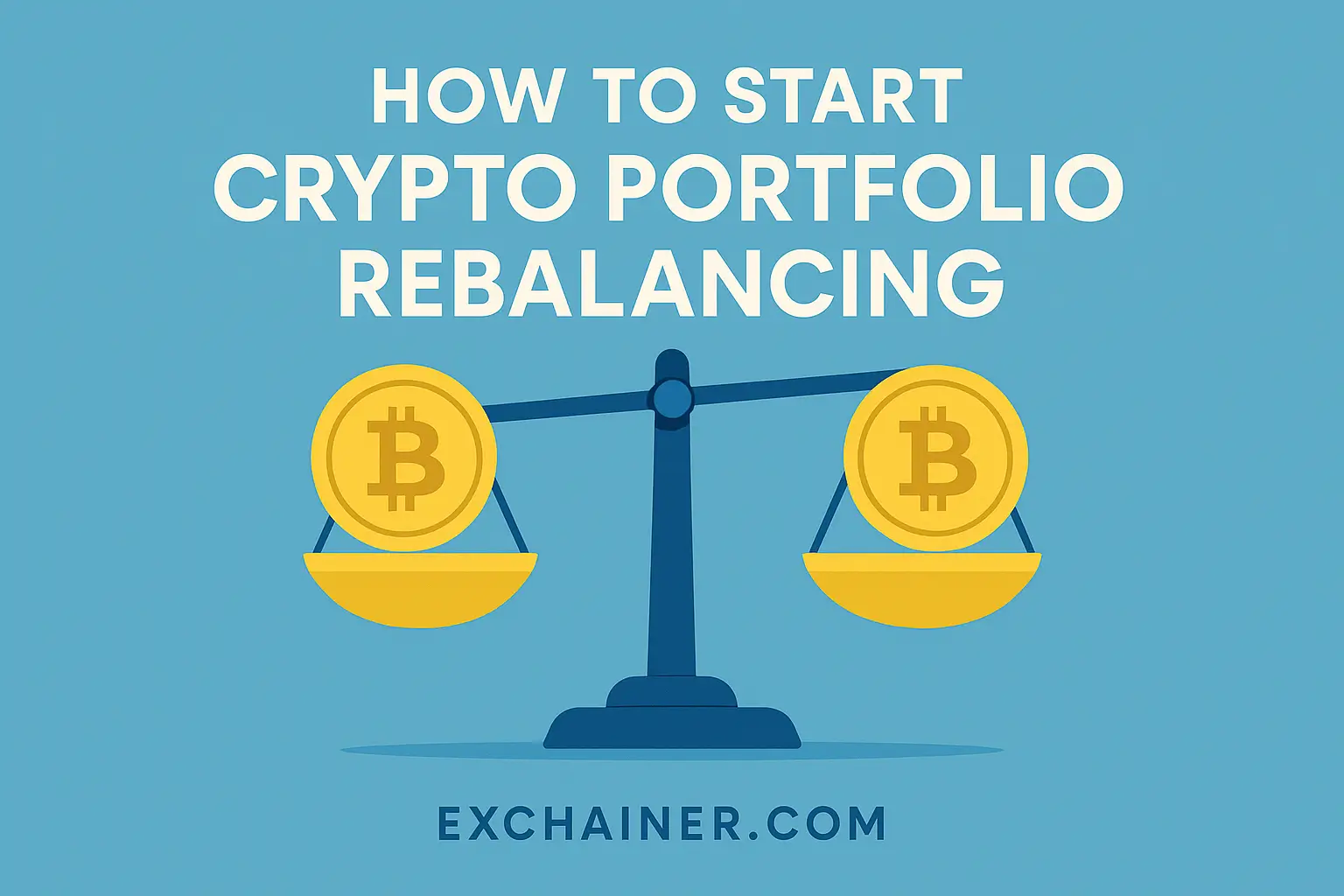Introduction
Friends, if you’ve dipped your toes into the vast sea of cryptocurrency trading or investing, you know how exciting and volatile this world can be. One minute, your crypto assets might be growing steadily, and the next, they could be swinging wildly with the market tides. This uncertainty makes managing a cryptocurrency portfolio both thrilling and challenging. That’s why understanding portfolio rebalancing is crucial—whether you’re a newbie figuring out the ropes or an intermediate investor looking to refine your strategy.
Portfolio rebalancing is like tuning a musical instrument to keep your investment harmony perfect. It’s the art and science of adjusting your crypto holdings periodically to maintain your desired risk level and investment goals. No matter if you're holding bitcoin, altcoins, or stablecoins, knowing how to rebalance can help you lock in gains, minimize risks, and keep your portfolio aligned with your financial ambitions.
So, what exactly is portfolio rebalancing, and how can you get started in this essential practice? In this guide, we’ll break down portfolio rebalancing, offer practical tips, and share real-world examples to illuminate this important concept. By the end, you’ll not only understand why rebalancing matters but also how to implement it effectively to enhance your crypto journey.
What Is Portfolio Rebalancing?
Portfolio rebalancing is the process of realigning the weights of assets in your investment portfolio to match your target allocation. Think of it as routine maintenance for your investment engine. Over time, some of your crypto assets might grow faster than others, causing your portfolio to drift away from the ideal balance you initially set.
Imagine you aimed to keep your portfolio 50% in Bitcoin and 50% in Ethereum. But after six months, Bitcoin’s value doubled while Ethereum remained stable. Now, your portfolio might be 70% Bitcoin and only 30% Ethereum. This drift increases your exposure to Bitcoin beyond your comfort level, potentially raising your risk.
By rebalancing, you sell some of the Bitcoin and buy more Ethereum to return to your intended 50/50 split. This simple adjustment helps maintain your desired risk and return characteristics.
Why does this matter in crypto? The cryptocurrency market is notoriously volatile, with price swings often more dramatic than traditional stocks or bonds. Without rebalancing, you might find your portfolio skewed toward a few tokens that gained huge value but also carry outsized risk. Rebalancing offers a disciplined way to manage these ups and downs.
Besides keeping risk in check, rebalancing also enforces a "buy low, sell high" approach. When you sell assets that have performed well and buy those that lagged behind, you systematically capture profits and invest in undervalued cryptocurrencies.
How to Choose Your Target Allocation
Before jumping into rebalancing, you need a clear portfolio structure. Your target allocation depends on your risk tolerance, investment horizon, and crypto-market outlook.
Here are some common approaches to portfolio allocation for crypto investors:
Conservative Portfolio:
If you’re cautious, you might allocate more to established digital currencies with a history of relative stability, like Bitcoin or Ethereum, with smaller portions in altcoins or stablecoins.
Example:
65% Bitcoin, 25% Ethereum, 10% stablecoins like USDC or Tether.
Balanced Portfolio:
This mix balances risks and rewards by including strong large-cap cryptos and promising mid-sized altcoins.
Example:
40% Bitcoin, 30% Ethereum, 20% selected altcoins (like Solana or Cardano), 10% stablecoins.
Aggressive Portfolio:
If you love high-risk, high-reward plays, your portfolio might skew toward smaller altcoins and DeFi tokens.
Example:
30% Bitcoin, 20% Ethereum, 40% altcoins, 10% stablecoins.
Remember, these numbers aren’t set in stone—they’re a guide. The key is to decide a target mix you feel comfortable with, then consistently rebalance toward it.
When and How Often to Rebalance Your Crypto Portfolio
So, how often should you rebalance your portfolio? The crypto world moves quickly, but that doesn’t mean you need to adjust your portfolio every day or week. Instead, there are a few smart strategies:
Time-Based Rebalancing:
Set a regular schedule—monthly, quarterly, or semi-annually—to review your portfolio and rebalance if necessary. This method prevents emotional decisions driven by market hype or panic.
Threshold-Based Rebalancing:
Rebalance when an asset’s weight deviates beyond a set percentage from your target allocation. For example, if you set a 5% tolerance band, rebalance once Bitcoin’s portfolio share moves beyond 55% or below 45% in a 50% target allocation.
Both approaches can work well—you may even combine them. For instance, check quarterly and rebalance only if allocations breach your thresholds.
How to Rebalance in Practice:
-
Calculate Current Allocation:
Total your portfolio value, then calculate the percentage each crypto asset represents. -
Compare to Target Allocation:
Identify which assets are overweight or underweight. -
Trade to Realign:
Sell a portion of overweight assets and buy more of the underweight ones. For example, selling some Bitcoin and buying more Ethereum. -
Consider Fees and Taxes:
Every trade may incur exchange fees and possible tax consequences. Choose markets or exchanges with low fees and keep records for tax reporting.
Example Scenario
Say your $10,000 crypto portfolio started as 50% Bitcoin ($5,000) and 50% Ethereum ($5,000). After some months, Bitcoin rises to $7,000, Ethereum falls to $3,000. That’s 70% and 30%, respectively. To rebalance:
- Sell $2,000 worth of Bitcoin
- Use that $2,000 to buy Ethereum
- Your portfolio returns to the 50/50 split.
Does this mean you’re "selling high and buying low"? Exactly! Portfolio rebalancing forces this beneficial habit.
Tools and Tips to Simplify Crypto Portfolio Rebalancing
Managing portfolio rebalancing manually can get tricky, especially as you add more cryptocurrencies. Luckily, there are tools designed to help.
Portfolio Trackers and Rebalancers: Many apps track your crypto investments and even suggest or automate rebalancing.
Examples include:
- CoinMarketCap: Beyond price tracking, it allows portfolio management to monitor allocations.
- Blockfolio: Popular mobile portfolio tracker with alerts.
- Shrimpy: Offers automated portfolio rebalancing tailored to your targets.
Using such tools can save time and reduce emotional decision-making, especially in fast markets.
Pro Tips for Portfolio Rebalancing:
- Don’t overtrade. Frequent rebalancing can increase fees and taxes. Stick to your schedule or thresholds.
- Use limit orders to control buy/sell prices. Markets move fast, and you don’t want to buy at peaks.
- Consider stablecoins in your portfolio. They provide a "safe harbor" during crypto downturns and are easy to trade back into other assets.
- Stay informed about new promising projects, but keep them a small portfolio portion until proven.
Why Portfolio Rebalancing Matters in Crypto Trading
Crypto trading is famous for sharp price swings, but that’s not just chaos—it’s opportunity. Without rebalancing, you risk your portfolio becoming unbalanced and overexposed to assets that could tank.
Portfolio rebalancing helps:
Manage Risks: You maintain a risk profile you’re comfortable with by not letting any one asset dominate.
Enforce Discipline: Removes emotional pitfalls like holding losing assets hoping for a turnaround.
Capture Profits: Regularly selling winners locks in gains rather than chasing a continuously rising market.
Diversify Exposure: Prevents "putting all eggs in one basket" by balancing various crypto assets.
As Warren Buffett famously said, "The stock market is a device for transferring money from the impatient to the patient." Rebalancing encourages that patience and thoughtful investing, especially in the wild crypto markets.
Conclusion
To wrap things up, portfolio rebalancing is an essential practice for crypto investors looking to manage risk, maintain balance, and ultimately grow their digital assets methodically. By setting a target allocation, choosing a rebalancing strategy, and using the right tools, you can turn crypto volatility into a strategic advantage.
Rebalancing keeps you disciplined, helps maximize profits, and ensures your portfolio reflects your risk tolerance and investment goals. Remember, it’s not about chasing every market move but about maintaining a steady course in the often wild seas of the cryptocurrency market.
Ready to get started? Begin by reviewing your current holdings and decide your ideal portfolio mix. Set up regular checks and explore tools like Shrimpy or CoinMarketCap to streamline the process.
Friends, if you enjoyed this guide and want to deepen your crypto knowledge, feel free to explore more beginner-friendly articles in the Crypto 101 category. Interested in choosing the best platforms for trading? Our Exchange Reviews section breaks down fees, security, and features. And don’t miss out on essential tools and wallets reviewed in Tools and Wallets to keep your assets safe and accessible.
Let’s make your crypto journey smarter, safer, and more successful together!












